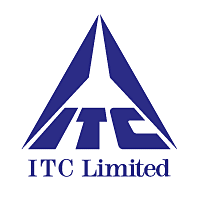 April 15, 2010 - After much deliberation, India has banned further foreign direct investment in the cigarette business. (India - cabinet decided to bar foreign direct investment (fdi)in cigarette manufacturing..)
April 15, 2010 - After much deliberation, India has banned further foreign direct investment in the cigarette business. (India - cabinet decided to bar foreign direct investment (fdi)in cigarette manufacturing..) That seems to be a blow to the likes of Japan Tobacco and British American Tobacco, which were lobbying to expand their small presence in the growing and increasingly affluent market. But the protectionist move should hardly come as a surprise, especially given that ITC, which has nearly 80% of the cigarette market, is 34%-government owned through state-run insurance companies. And it should give companies time to think if they really are missing out.
That seems to be a blow to the likes of Japan Tobacco and British American Tobacco, which were lobbying to expand their small presence in the growing and increasingly affluent market. But the protectionist move should hardly come as a surprise, especially given that ITC, which has nearly 80% of the cigarette market, is 34%-government owned through state-run insurance companies. And it should give companies time to think if they really are missing out.
Despite rapid growth in disposable income and massive migration of people from rural to urban areas, cigarettes are the choice of only a slim segment of Indian tobacco users. Many prefer chewing tobacco. Among those who smoke, hand-rolled leaf tobacco is favored; a mere 15% smoke cigarettes.
And profit margins are tight, in part because of competition from contraband cigarettes smuggled across the borders and illegally made local smokes. Though there are no specific estimates of how many such smokes circulate in the market, ITC says they are its biggest challenge.
On top of that, New Delhi, particularly the Health Ministry, is increasingly vocal about curbing smoking. Even before the formal investment ban, the government had rejected proposals by foreign players to increase their presence in India. Existing rules use licenses to cap the number of cigarettes a company can produce in a year, and there are loud calls for higher tax rates to reduce tobacco use. The country's tobacco tax already represents 69% of the retail price of a cigarette -- among the highest percentages in the region, according to the Tobacco Institute of India, a trade group.
And cigarette makers bear a disproportionate share of the tobacco tax. Though cigarettes represent only about 40% of India's $12 billion tobacco market, they generated 80% of the revenue collected from the tobacco industry in 2007-08. The non-cigarette industry is fragmented, consisting of many small-scale players.
Certainly, global companies may have hoped a market like India -- where cigarette consumption is growing around 5% a year, according to Datamonitor -- could offer growth potential they lack at home. Japan Tobacco is hunting for new markets as its domestic market shrinks due to a declining population and fewer people lighting up.
But when the smoke clears, foreign firms may see India's protected market has its own shortcomings.
Reference: Cigarette Makers' India Pipe Dreams by HARSH JOSHI, WSJ.com, 4/13/2010; Govt bans FDI in cigarette manufacturing, Business Standard Reporter, New Delhi/kolkata, 4/9/2010.
India - some related news briefs:
*India - increasing taxes on cigarettes and bidis to save lives..;
*India - cabinet decided to bar foreign direct investment in cigarette manufacturing..;
*India - captions with pictorial warnings should use local languages..;
*ndia - pictorial warning will appear on every tobacco pack sold from June 1 , 2010..;
*India - government set to ban foreign direct investment in tobacco..;
*India - despite tobacco control measure in place - tobacco sales increase..;
*India - still confusion pictorial warnings on cigarette packs..;
*Mumbai, India - NGO activists want closure of hookah bars..;
*India - gutkha and bidi companies NOT pictorial warnings..;
*India - cigarette packs with pictorial warnings are here..; *ndia - NO graphic pictorial warnings yet..;
*India - Still no pictorial warnings on cigarette packs..;
*India - pictorial warning on cigarettes and tobacco products effective May 31, 2009..;
*India - pictorial warning on cigarettes and tobacco products will be implemented from May 31 - no doubts about it..;
*India - will pictorial or graphic health warnings be implemented from May 30, 2009..;
*India - placing pictorial warnings on tobacco products delayed again..
Bringing the World of Tobacco Control closer together..
India - more on ban on foreign direct investment - more insight on tobacco market ..
Subscribe to:
Post Comments (Atom)


To Provide Public Awareness
Purpose
About Us
Contact Us
2008 HIGHLIGHTS
TOPIX PAPERS - 2008 & 2009..
Archive
-
▼
2010 (1530)
-
▼
04/11 - 04/18 (31)
- California - will governor sign bill to ban smoki...
- Spain - in June 2010 government will present a law...
- Smoking during pregnancy - potentially negative ...
- Syria - smoking ban goes into effect on April 21, ...
- Bulgaria - parliament debates proposal to water d...
- Bulgaria - majority of all Bulgarians - 78% are ag...
- Ghana - WHO FCTC meeting - alternatives to growin...
- U.S. - Convenience Store In-Store Sales Grew in 20...
- California - small tobacco companies non-participa...
- U.S. FDA CTP - To Launch Stakeholder Listening Se...
- Michigan - smoking ban takes effect May 1, 2010 bu...
- India - more on ban on foreign direct investment ...
- Japan - people more aware of dangers of smoking c...
- South Carolina - senators try to write bill on ci...
- Ireland - no increase in excise duty on tobacco pr...
- U.S. Congress discusses elimination of tobacco use...
- Australia - federal government considering a hike ...
- Tobacco companies to buy less tobacco this year..
- Minnesota - anti-tobacco advocates going after di...
- Wales set to ban the display of tobacco products..
- Lorillard Inc. CEO Martin L. Orlowsky made 36 perc...
- Canada - tobacco firms settle cigarette smuggling...
- Ontario - NO new measures to curb youth smoking..
- Indonesia - slower annual growth expected in tobac...
- Indonesia - launches formal dispute with WTO over ...
- Prohibit the sale of inexpensive machine-made cig...
- Washington State - increase in tax on all tobacco ...
- India - increasing taxes on cigarettes and bidis t...
- Cheyenne, Wyoming Frontier Days is pulling the pl...
- Muscat, Oman - no smoking in closed public areas..
- Paraguay - no smoking law to be strictly enforced ...
-
▼
04/11 - 04/18 (31)
© Copyright Notice: The content of this website is for information education purposes only and any newsbrief may be used only as "fair use" for information/education purposes with permission of the authors and providing that original references and associated reference links are included in HTML format.
0 comments:
Post a Comment